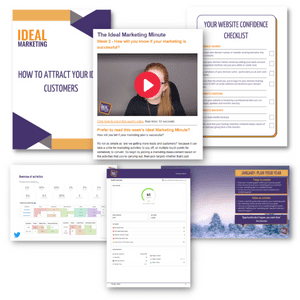Roughly 80% of businesses will use content marketing in 2016, it is now a necessary part of raising brand awareness. However, many still find it a daunting and intimidating task.
 The challenge lies with how your business can break through the crowds to connect with prospects, influencers and customers. At the heart of all efforts, content marketing has a central principle; deliver fresh, unique and informative content that appeals to your target audience.
The challenge lies with how your business can break through the crowds to connect with prospects, influencers and customers. At the heart of all efforts, content marketing has a central principle; deliver fresh, unique and informative content that appeals to your target audience.
How you go about doing so will vary and change as you get a better knowledge of your audience.
Knowing your audience is the foundation of creating a content marketing strategy. Being unaware of your audience will result in your messages being missed for the most part.
Profiling your audience is extremely straightforward due to the ease of gaining access to your target market. This can be done through studying the efforts of competitors and gaining insights from their best-performing posts to see what tone or content is most appealing. The better you know them, the better you can create content that yields results.
When you know who your target audience is, what they enjoy reading, and their shopping and browsing habits, your work becomes easier than writing endless streams of irrelevant content.
Construct a mission statement and goals
Before you begin to brainstorm topic ideas, it is important to think of your aims. Beyond the SEO benefits, what are you trying to achieve?
Within the statement you should isolate your audience, content form and main objective. Further to this, establish a breakdown of the different types of content you’ll be offering.
A concise mission statement will communicate your objectives in simple terms. For example “Brand X aims to provide fun, healthy and nutritional advice and recipes for busy parents on the go to help improve their family’s eating habits.”
Research topics
Setting up Google Alerts makes researching topics effortless. The system allows content curators to stay up-to-date with news and internet items that are relevant and tailored to a specific industry.
Doing so helps you to find fresh news stories that are interesting to republish your blog with.
Draft ideas and select the best mediums
Using the constructed mission statement, research and the information gathered about the target market, you will now be able to shortlist a range of topic ideas for a post.
It is important to remember that not all of your content efforts should be self-promotion; if they are, visitors will lose interest quickly. As an alternative, content should be helpful and informative for your audience.
A common blog post will certainly be suffice for the majority of post, however not all content adheres to this, some may be better suited to a video or infographic. This will help to engage people who prefer to digest information through other means.
Track and measure
Once you’ve published and promoted your posts, it is important to become vigilant of the analytics. Depending on the posts success, it will help to guide you with future posts – maximising the potential reach of your site.
If you find that your bounce rate is high, integrate links and elements into posts to help direct readers to other posts. It is also recommended that you analyse referral traffic from other websites or blogs. If a strong traffic source is found, this support could then be increased on a deeper level.
For marketing advice specific to your business, get in touch and speak with a marketing specialist on 01858 374 170 or email info@idealmarketingcompany.com







